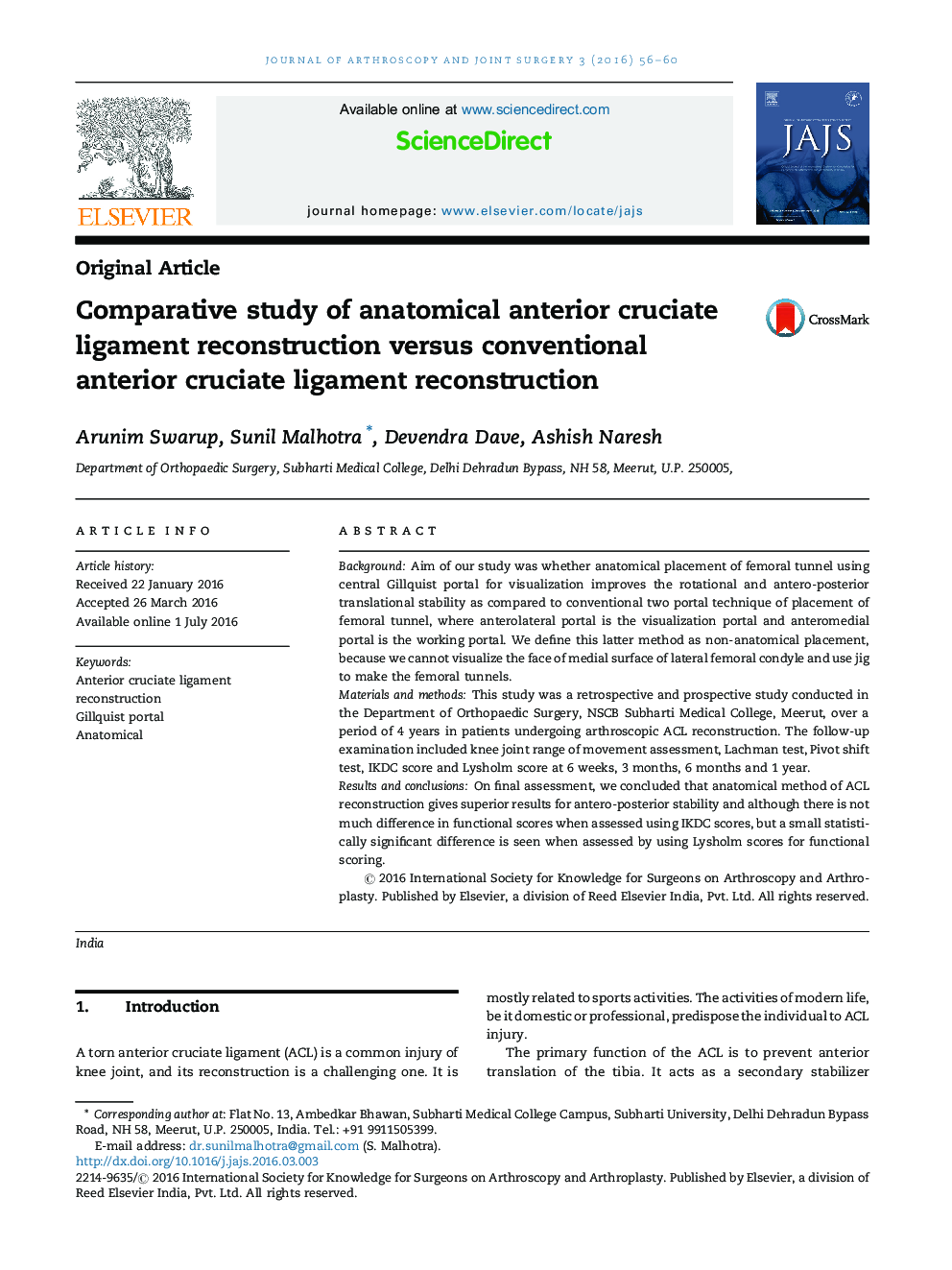| کد مقاله | کد نشریه | سال انتشار | مقاله انگلیسی | نسخه تمام متن |
|---|---|---|---|---|
| 3245076 | 1407241 | 2016 | 5 صفحه PDF | دانلود رایگان |
BackgroundAim of our study was whether anatomical placement of femoral tunnel using central Gillquist portal for visualization improves the rotational and antero-posterior translational stability as compared to conventional two portal technique of placement of femoral tunnel, where anterolateral portal is the visualization portal and anteromedial portal is the working portal. We define this latter method as non-anatomical placement, because we cannot visualize the face of medial surface of lateral femoral condyle and use jig to make the femoral tunnels.Materials and methodsThis study was a retrospective and prospective study conducted in the Department of Orthopaedic Surgery, NSCB Subharti Medical College, Meerut, over a period of 4 years in patients undergoing arthroscopic ACL reconstruction. The follow-up examination included knee joint range of movement assessment, Lachman test, Pivot shift test, IKDC score and Lysholm score at 6 weeks, 3 months, 6 months and 1 year.Results and conclusionsOn final assessment, we concluded that anatomical method of ACL reconstruction gives superior results for antero-posterior stability and although there is not much difference in functional scores when assessed using IKDC scores, but a small statistically significant difference is seen when assessed by using Lysholm scores for functional scoring.
Journal: Journal of Arthroscopy and Joint Surgery - Volume 3, Issue 2, May–August 2016, Pages 56–60
